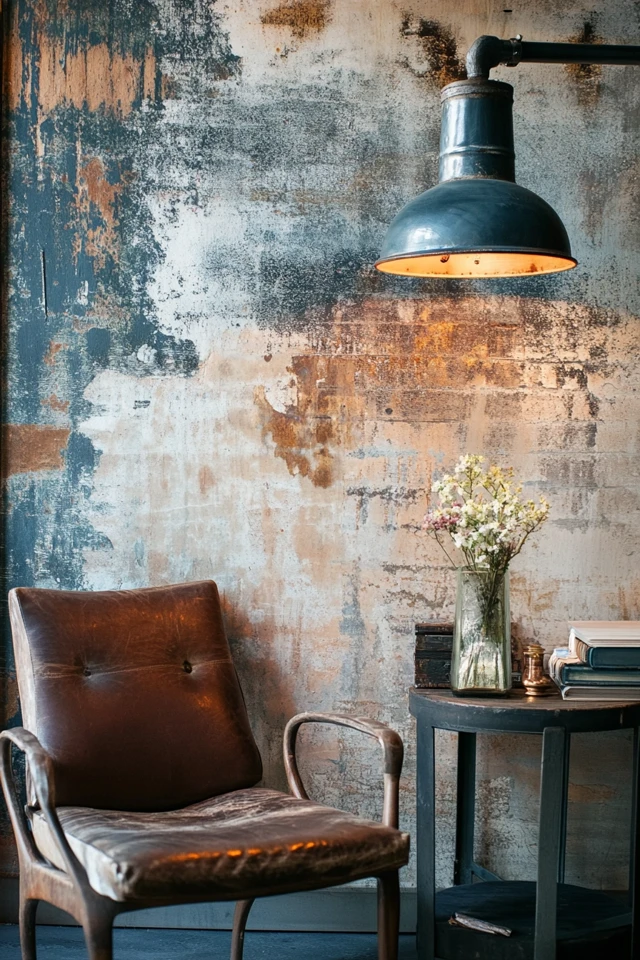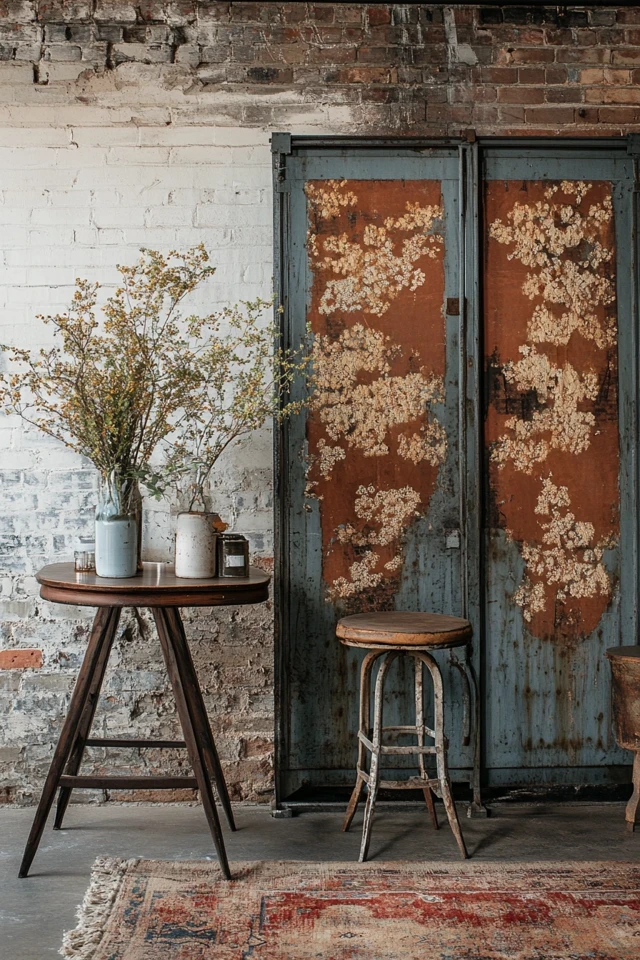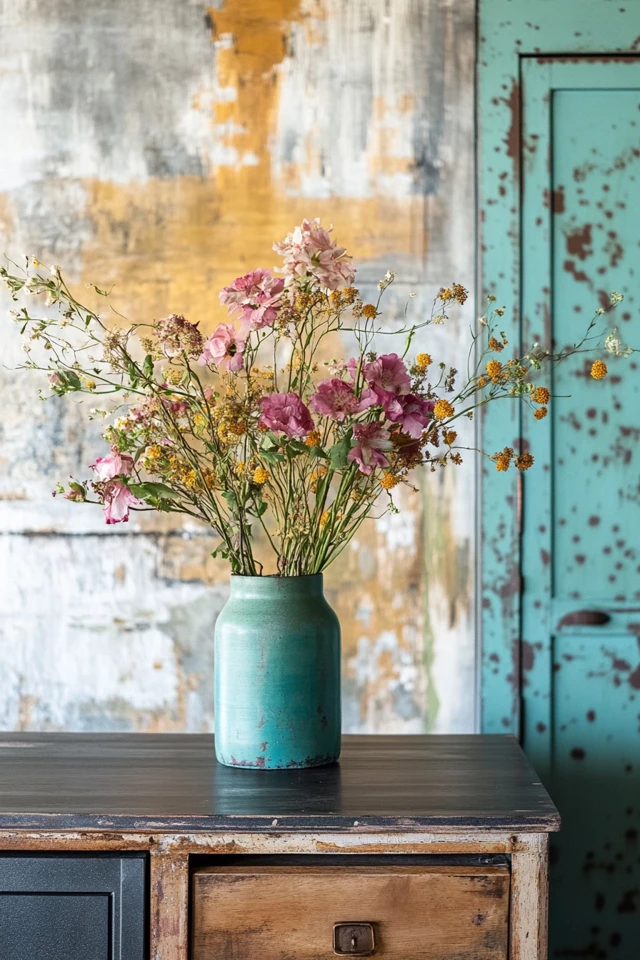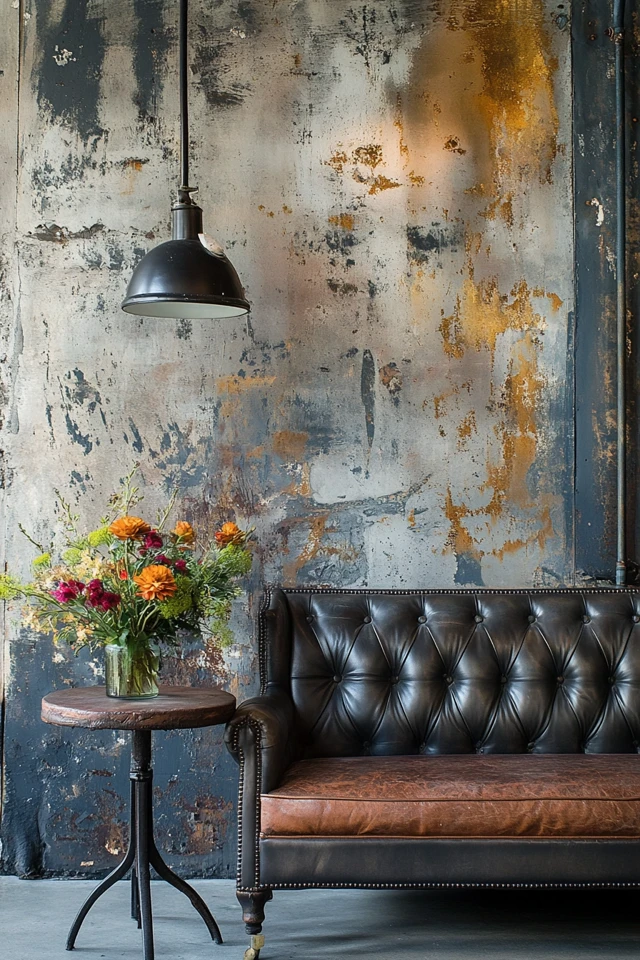Introduction
There’s a special kind of magic in discovering vintage treasures. I still remember the thrill of finding an old, industrial-style drafting table at a flea market during a weekend getaway. It had a cast-iron base, a perfectly weathered wooden top, and just enough patina to tell a story without looking worn out. I instantly knew it would be the centerpiece of my client’s industrial-inspired home office. That table transformed the room, adding character, warmth, and a sense of history that new furniture just can’t replicate.
Incorporating vintage finds into industrial spaces is a design approach that feels authentic and timeless. Industrial design, with its raw materials and utilitarian roots, pairs beautifully with vintage pieces because both celebrate craftsmanship, history, and functionality. Whether it’s a metal locker salvaged from a factory, a distressed leather armchair, or a repurposed factory cart turned coffee table, vintage items can elevate an industrial space by adding layers of texture and personality.
In this post, I’ll walk you through how to seamlessly incorporate vintage finds into your industrial space. From sourcing the perfect pieces to styling them with modern industrial elements, you’ll learn how to create a home that’s full of character and charm.
Why Vintage Finds Work So Well in Industrial Spaces
1. A Shared Love for History
Both vintage and industrial design celebrate the past. Vintage pieces often come with a sense of nostalgia, while industrial design’s origins in factories and warehouses offer a raw, historic edge. Together, they tell a story that feels authentic and grounded.
2. Adding Warmth to the Raw Aesthetic
Industrial spaces, with their exposed pipes, concrete floors, and metal finishes, can sometimes feel cold or stark. Vintage finds bring warmth, texture, and personality to balance the rawness of the industrial aesthetic.
3. Uniqueness and Character
No two vintage pieces are exactly alike. Incorporating vintage finds ensures your space is one-of-a-kind, with elements that spark conversation and create visual interest.
Where to Source Vintage Finds
1. Flea Markets and Antique Stores
Flea markets and antique stores are treasure troves for vintage furniture and décor. Look for items with industrial touches, such as metal hardware, wood-and-metal combinations, or weathered finishes.
2. Online Marketplaces
Websites like Etsy, Chairish, and eBay are excellent sources for vintage finds. Search for terms like “industrial vintage,” “factory furniture,” or “mid-century modern industrial” to narrow down your options.
3. Salvage Yards
Salvage yards are great for finding unique architectural elements like metal grates, old doors, and light fixtures that can be repurposed in industrial spaces.
4. Thrift Stores
You’d be surprised at the gems you can find in thrift stores, from old typewriters and rotary phones to vintage books and artwork.
5. Garage and Estate Sales
These are excellent for scoring unique items at a fraction of the cost. Keep an eye out for industrial furniture like lockers, desks, or storage cabinets.
How to Incorporate Vintage Finds into Your Industrial Space
1. Start with Statement Pieces
Choose one or two larger vintage items to anchor your space. Examples include a vintage leather sofa, a reclaimed wood dining table, or a metal-and-glass factory light fixture. These pieces set the tone for the room and can be styled with modern industrial elements.
2. Mix and Match Materials
Industrial spaces are known for their raw materials, like metal, concrete, and exposed wood. Vintage pieces with similar materials—such as a weathered metal locker or a wood-and-iron coffee table—blend seamlessly into the design.
Tip: Don’t be afraid to mix finishes. A brass mirror can look stunning alongside blackened steel or chrome accents.
3. Use Accessories to Add Character
Smaller vintage accessories can make a big impact without overwhelming the space. Consider incorporating items like:
- Old factory clocks
- Vintage signs or advertisements
- Aged leather suitcases as side tables
- Industrial tools or machinery as décor pieces
4. Repurpose Vintage Items
One of my favorite ways to incorporate vintage finds is by giving them a new purpose. For example:
- Use an old factory cart as a coffee table.
- Turn a vintage ladder into a bookshelf or blanket holder.
- Repurpose metal lockers as stylish storage in your entryway.
5. Balance with Modern Elements
To keep your space feeling fresh and not overly retro, pair your vintage finds with modern industrial elements. For instance, a vintage drafting stool can look incredible next to a sleek concrete kitchen island.
Picture Gallery








Styling Tips for Vintage Finds in Industrial Spaces
1. Layer Textures
Combine rough textures (like weathered wood or rusted metal) with softer elements (like leather or woven textiles) to create a balanced and inviting space.
2. Play with Scale
Vintage pieces often come in unexpected sizes. Use oversized items like a factory clock or an industrial light fixture as focal points, while smaller items like desk fans or typewriters can be used as accents.
3. Create Groupings
Group similar vintage items together for maximum impact. For example, hang a collection of vintage tools on the wall or display a series of old books on a shelf.
4. Incorporate Greenery
Plants can breathe life into an industrial space and soften the look of vintage pieces. Consider placing potted plants on or around vintage furniture for a fresh touch.
5. Focus on Functionality
Industrial design values practicality, so choose vintage items that serve a purpose. For instance, an old trunk can double as a coffee table and storage solution.
Conclusion
Incorporating vintage finds into industrial spaces is like adding the final brushstrokes to a masterpiece. These pieces bring warmth, authenticity, and a sense of history that can’t be replicated with new furniture. Whether it’s a distressed leather armchair, a metal locker salvaged from a factory, or a repurposed workbench, vintage items have the power to transform a space into something truly unique.
When I think back to that drafting table from the flea market, I’m reminded of the joy that comes from finding the perfect piece—something that feels like it belongs, as if it’s always been there. That’s the beauty of vintage finds in industrial spaces. They’re not just decorations; they’re stories waiting to be told.
So, as you curate your own industrial space, don’t be afraid to mix the old with the new. Hunt for treasures, embrace imperfections, and let your personality shine through. After all, design is all about creating a space that feels like home—and nothing feels more personal than a piece with a story.
FAQ
1. What types of vintage items work best in industrial spaces?
Look for items with industrial characteristics, such as metal finishes, weathered wood, or utilitarian designs. Examples include factory carts, lockers, drafting stools, and vintage light fixtures.
2. How can I mix vintage and modern industrial elements?
Pair vintage items with clean-lined, modern industrial pieces. For example, a vintage leather sofa can look stunning next to a minimalist concrete coffee table.
3. Where can I find affordable vintage pieces?
Check out flea markets, thrift stores, garage sales, and online marketplaces like Etsy and eBay for budget-friendly vintage finds.
4. How do I repurpose vintage items for industrial spaces?
Get creative! Use an old ladder as a bookshelf, a factory cart as a coffee table, or metal lockers for storage. The possibilities are endless.
5. How can I maintain vintage furniture and décor?
Clean vintage items with appropriate products for their material (e.g., leather conditioner for sofas, metal polish for fixtures). For wood pieces, use a gentle cleaner and seal with wax or oil to preserve their finish.


